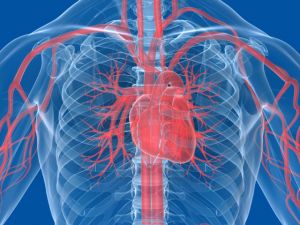
Poor circulation is usually associated with swelling or puffiness in the feet, ankles, and calves, but if you sit most of the day without exercising—even if you don’t experience these symptoms—chances are your circulation may not be the best.
Other symptoms of poor circulation include cold hands and feet, fatigue, impaired cognitive function, varicose veins and hypertension (high blood pressure). Likewise, if you have atherosclerosis, diabetes, or high cholesterol, your body already has to work harder to get blood circulating throughout your body.
Luckily, there are some simple lifestyle changes and additions you can make to improve your circulation. Here are seven of them.
1. Get moving
Sedentariness is the best friend of poor circulation, and movement its worst enemy. Ideally, you want to incorporate about 30-40 minutes of moderate-intensity exercise into most days of your week, but if this isn’t possible, there’s other ways to sneak movement into your day.
Take the stairs instead of the elevator, and choose the parking spot that’s furthest away. At lunchtime, choose somewhere within walking distance, and try to get up frequently for a quick jaunt throughout the day—at least once per hour.
2. Stretch
Stretching can increase blood flow to different muscles and parts of the body, so it’s a great way to improve your circulation throughout the day. Try to make a habit of stretching first thing in the morning, or take short stretch breaks throughout the day to keep your blood flowing.
Here are some examples of stretches you can do at your desk.
3. Relax
Stress and anxiety contribute to poor circulation in a few ways. They affect the way you breathe, often either causing you to hold your breath or to breathe too quickly and shallowly. Both affect how much oxygen circulates throughout your body.
The surge of adrenaline that comes with stress, anxiety, or anger also causes blood to rush toward the muscles, which can cause temporarily poor blood circulation in other body parts. Furthermore, stress can cause tension and knots to build up in and around certain muscles over time, which can cut off circulation to those areas.
So, to improve your circulation, you need to relax. Get your stress under control by making sure to get enough sleep and down time, and start to incorporate practices like yoga, meditation, deep breathing, and regular massages (which you can actually do yourself) into your daily life!
4. Quit smoking
Smoking cigarettes damages and eventually destroys the body’s ability to circulate blood more than any other single factor. If you still smoke, especially if you’re experiencing symptoms of poor circulation, it’s time to quit!
5. Stay hydrated
Keeping your body well hydrated is important for your health in general, but it’s especially important for keeping blood circulating throughout your body. Plasma, which makes up more than half of total blood volume, is about 93 percent water. When you’re dehydrated, blood becomes more concentrated and thicker, making it more difficult to effectively circulate.
Stay hydrated by drinking 8 glasses of water per day, minimum, and limiting caffeine and alcohol. If you have a coffee or a glass of wine, add another glass of water to your daily total.
6. Incorporate more circulation-promoting foods into your diet
 Some foods, spices, and herbs have been shown to help improve circulation. These include garlic, cayenne, ginger, turmeric, fatty fish high in omega-3s, high fiber foods like fruits and vegetables, raw dark chocolate, foods high in vitamin C like oranges, and foods high in lycopene such as watermelon and grapefruit.
Some foods, spices, and herbs have been shown to help improve circulation. These include garlic, cayenne, ginger, turmeric, fatty fish high in omega-3s, high fiber foods like fruits and vegetables, raw dark chocolate, foods high in vitamin C like oranges, and foods high in lycopene such as watermelon and grapefruit.
For better circulation, try to incorporate more of these foods and spices into your diet.
7. Put your ‘Legs Up the Wall’
This yoga pose, called Viparita Karani in Sanskrit, is gentle, relaxing, and really helps to increase circulation. To do this pose:
· Sit on the floor, knees bent, with one shoulder and hip touching the wall (your body is sideways).
· Lower your back to the floor, with your legs still bent, keeping your body close to the wall.
· Use your forearms and elbows to help you swing around and bring your legs up the wall, so that the backs of your legs are resting against the wall, your bottom is touching or almost touching the wall, and your legs are at about a 90 degree angle with your torso.
· Close your eyes, breathe deeply through your nose, and relax, as gravity helps to restore your circulation.
You can put a cushion under your head and/or lower back if it’s more comfortable, or if your bed is pushed up against a wall, you can do it there! Do this posture for 5-10 minutes each night before bed, as it’s also great for balancing hormones and aiding sleep.
Circulation, like so many other aspects of our health, can be greatly improved simply by making some adjustments to your diet and lifestyle. Good luck! We know you can do it.
-The Alternative Daily
Sources:
http://www.thealternativedaily.com/5-best-herbs-spices-blood-circulation
http://www.wikihow.com/Improve-Blood-Circulation
http://livinggreenmag.com/2013/07/10/food-health/eight-ways-to-improve-your-blood-circulation
http://www.thealternativedaily.com/eight-great-yoga-moves-can-desk
http://www.thealternativedaily.com/3-ways-reduce-chronic-pain-tension-self-massage

